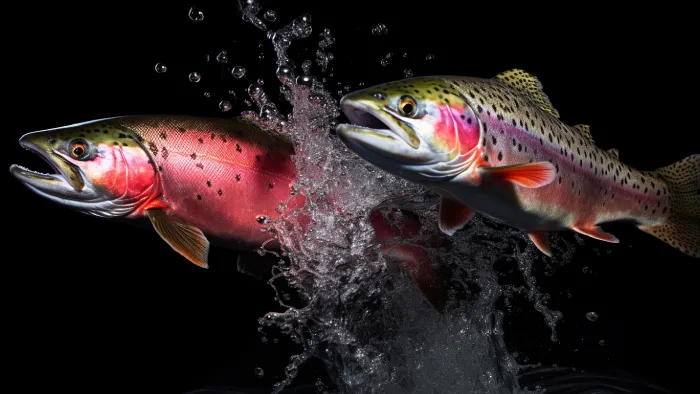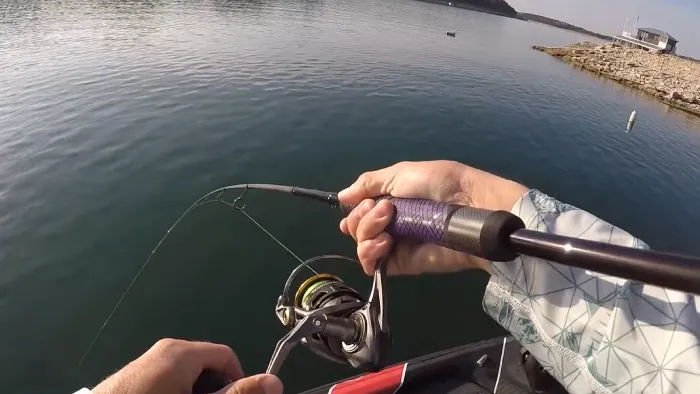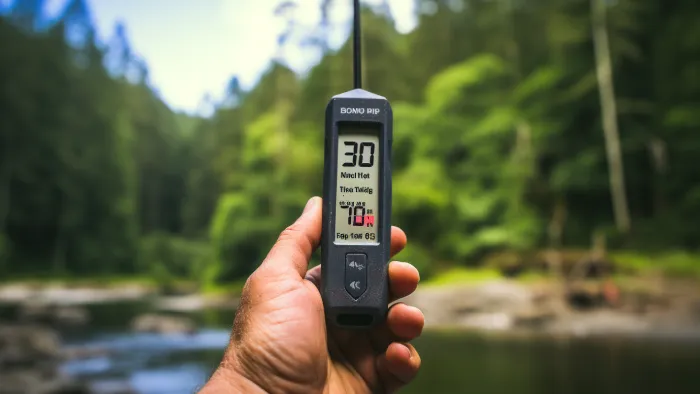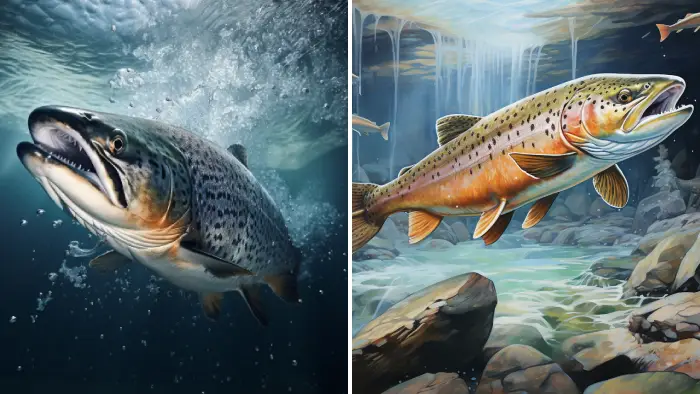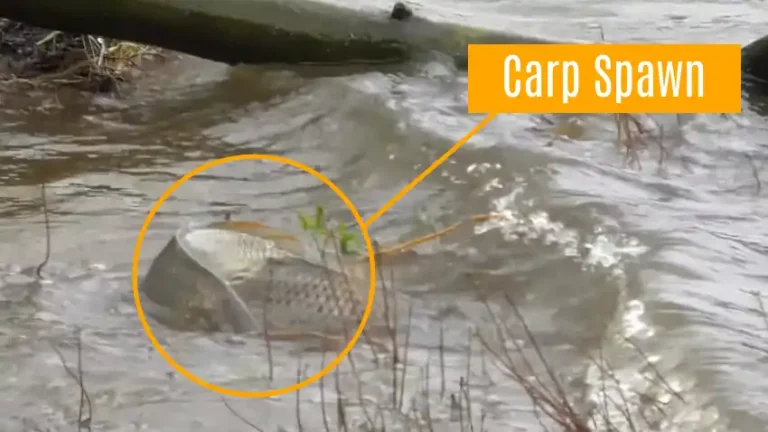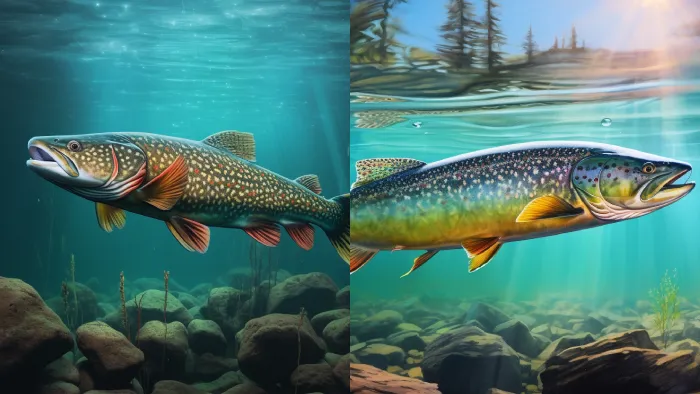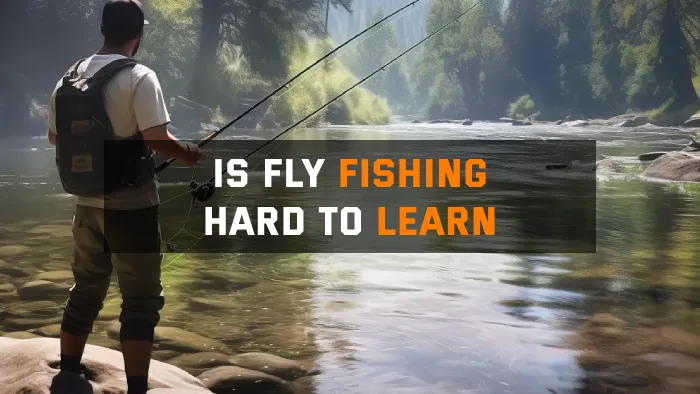Male vs Female Steelhead for Fly Fishing: 6 Key Differences [Explained]
Steelhead, a type of trout that migrates from saltwater to freshwater rivers, is a common target for fly fishermen. But did you know that male and female steelhead have distinct characteristics and behaviors that can affect your fishing strategy?
Male steelheads, also known as Bucks, can be identified by their vibrant colors. They have a hooked lower jaw called a kype that helps them compete during spawning. Conversely, females, known as Hens, typically have a more silver appearance and do not develop the kype like males.
We will examine today the differences between male and female steelhead and how these differences can influence your fly fishing techniques. You can catch more fish and have a better fly fishing experience if you understand how male and female steelhead differ. So keep reading for in-depth information.
6 Differences Between Male and Female Steelhead for Fly Fishing
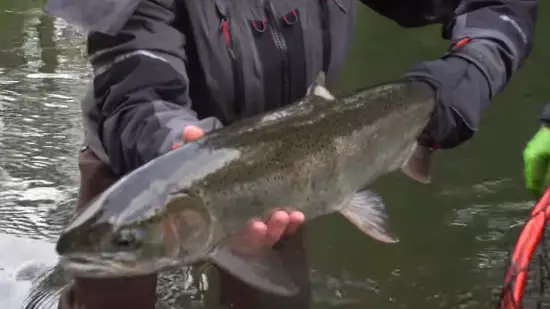
Regarding fly fishing for steelhead, you should understand the differences between male and female fish, such as:
- Body shape & appearance
- Jaw size and shape
- Reproductive behavior
- Maturity
- Bait preferences
- Catching season
Let’s discuss these in more detail:
1. Body Shape & Appearance
Male steelheads, also called “bucks,” have a sleek, tall, and narrow body shape that is usually more colorful than females. They are covered in shiny silver, blue, and green scales with iridescent pink or purple hues that become more pronounced the longer they spend in freshwater.
As they mature, males might develop a hooked jaw as a secondary sexual characteristic, and their adipose fins can be two to three times larger than females.
In contrast, female steelhead, also known as “hens,” have a rounder body shape and more subdued coloration. Although their scales are still silvery when they first enter freshwater, hens may develop darker, earthy colors as they get closer to spawning.
2. Jaw Size and Shape
To identify the difference between male and female steelheads while fishing, note the size and shape of their jaws. Males, also known as bucks, have a longer jaw line than females.
Their jaw tip often forms a knob, similar to Pacific salmon. In addition, male steelheads have a convex-sloped forehead that points out at the nose. Their teeth are longer and can resemble fangs, even when their mouths are closed.
On the other hand, females, or hens, have a more streamlined head shape. Their entire head flows seamlessly to the tip of the nose. The head of a female steelhead is generally smaller compared to a male. Unlike males, females do not possess the same prominent and elongated teeth.
3. Reproductive Behavior
Male steelhead undergo striking physical changes during spawning season to compete for female attention. With a hooked jaw and a colorful appearance, they display their best side through aggressive behavior, including fighting for prime spawning locations.
Conversely, female steelhead develop eggs in preparation for spawning. They choose warm gravel beds in rivers to create depressions and deposit their eggs, which the males fertilize. After laying the eggs, hens cover the redd with gravel to protect them.
Here are three key aspects of male steelhead behavior in females:
- Aggressive displays: Male steelhead engage in aggressive behaviors to compete for the attention of females. They fight with other males to establish dominance and access prime spawning locations.
- Colorful appearance: Bucks undergo physical changes during this time, developing a hooked jaw (kype) and vibrant colors. These changes help them attract female steelheads, drawn to the most visually impressive males.
4. Maturity
Male steelheads mature faster than females and return to freshwater at a younger age. They are focused on competing for mates and establishing spawning territories.
In contrast, female steelhead take longer to mature and may spend more time at sea before returning to spawn. Their main focus is on producing and protecting their eggs.
5. Bait Preferences
To increase your chances of catching steelhead in fly fishing, try using translucent creamsicle-colored paddle tail worms or pink roe bags, as they are effective bait options.
Translucent creamsicle-colored paddle tail worms primarily attract male steelhead. The translucent color and the paddle tail’s movement mimic the fish’s natural prey, making it irresistible to males.
On the other hand, pink roe bags are more effective for attracting female steelheads. The pink color simulates the appearance of fish eggs, which females are instinctively drawn to during their spawning season.
6. Catching Season
The fishing season for steelhead is at its peak in certain tributaries. During this time, anglers can target both male and female steelhead.
According to research, female steelhead are more commonly caught early in the season in these tributaries. This could be attributed to their behavior and feeding patterns during this time. As the season progresses and the spawning season approaches, male steelhead become more prevalent in the catch.
Anglers may find that using different techniques or baits can increase their chances of catching either species of steelhead during the appropriate time of the season.
Why is steelhead fishing so challenging?
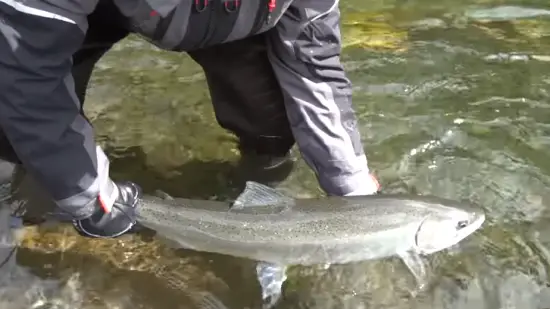
You’ll find steelhead fishing challenging due to the specific water conditions they prefer and their constant movement. Here are three reasons why:
- Water depth: Steelhead prefer water at least 2-3 feet deep. This can make it difficult to locate them, as they won’t rest in shallow waters. Finding the right depth can be a challenge.
- Water speed: Steelheads thrive in water that’s moving at a brisk pace. However, swollen flood waters can make it hard to find fish. It requires skill and knowledge to determine the ideal speed of the water.
- Constant movement: Steelheads are constantly on the move. They don’t stay in one place long, making tracking and catching them challenging. Anglers must be patient and persistent in their pursuit.
What should I look for when fishing steelhead?
When fishing for steelhead, watch for rocky or gravelly areas with a strong current at least a few feet deep. Steelheads prefer these areas because boulders and rocky cover provide protection and hiding spots.
Current presence is also important, as it helps oxygenate the water and provides a constant flow of food for the fish. Also, steelhead holding in shallower water tend to seek out riffles on the top of the stream.
These rifles create turbulence and make the fish harder to spot, allowing them to remain hidden and feel more secure. So, when searching for steelhead, focus on these specific characteristics of the water to increase your chances of a successful catch.
What is the best steelhead bait?
Fresh, cured roe is the ultimate bait for catching steelhead. Nothing beats roe’s natural scent and texture when attracting these elusive fish. Here are three reasons why roe is the best steelhead bait:
- Scent: Steelheads have a keen sense of smell, and the strong aroma of fresh roe is irresistible. The scent of roe can travel through the water, luring steelhead from afar.
- Texture: Steelheads are known for their finicky feeding habits, but they can’t resist roe’s soft, delicate texture. When presented properly, roe mimics the eggs of spawning fish, making it an irresistible treat for hungry steelhead.
- Natural Appeal: Unlike artificial baits, roe is a natural food source for steelhead. It resembles the eggs of fish that steelhead prey upon in the wild, making it a familiar and enticing meal.
What month is best for steelhead fishing?
The winter steelhead run starts to peak in December and continues strong until February. These months are ideal for catching steelhead because they are actively migrating and feeding.
During this time, you can expect to find a lot of 3 to 7-pound steelhead, with the occasional 10-pound-plus fish mixed in.
However, the summer run is another great option if you’re looking for a different season. Starting in mid-July and ending in early November, this run also offers excellent opportunities to catch steelhead.
Where is the best steelhead fishing in the USA?
For the most excellent steelhead fishing in the USA, you should head to Oregon, where you’ll find plentiful fishing locations along the Pacific Coastline. Oregon is known for its abundance of steelhead and offers diverse areas to fish.
Here are three prime fishing locations in Oregon:
- The Rogue River: This iconic river is famous for its steelhead runs, attracting anglers from all over. With its deep pools and fast runs, the Rogue River provides excellent opportunities to catch steelhead throughout the year.
- The Umpqua River: This is another top-notch fishing destination renowned for its steelhead populations. This river offers a variety of fishing spots, from its lower reaches to its tributaries, ensuring a great fishing experience for all.
- The Sandy River: Located near Portland, the Sandy River is easily accessible and offers fantastic steelhead fishing opportunities. Its clear waters and diverse habitat make it a prime location for anglers seeking to hook into some impressive steelhead.
What time of day are steelheads most active?
During low light conditions, you’ll have the best chance of catching an active steelhead when using a spinning tackle. Steelheads are known to be more active during the early morning and late afternoon when the light is dimmer.
This is because steelheads are more comfortable and less wary in low light conditions, making them more likely to strike at your bait or lure.
The reduced sunlight also provides a natural camouflage for the steelhead, making it easier for them to approach and ambush their prey. Also, during these times of the day, the water temperature may be cooler, which can also increase the activity level of the steelhead.
What colors do steelheads see best?
Black, blue, pink, and purple are believed to be the best for steelhead fishing in the Northwest, as these colors are most visible to steelhead. When attracting steelheads, choose colors that stand out and catch their attention. Here are three reasons why these colors are preferred:
- Contrast: Black and blue create a strong contrast against the water, making it easier for the steelhead to spot the bait. The sharp contrast helps the fish distinguish the bait from its surroundings.
- Visibility: Pink is a highly visible color in water, facilitating steelhead detection. The vibrant hue stands out against the background, increasing the chances of attracting a bite.
Is Pink Worm or Jig better for Steelhead?
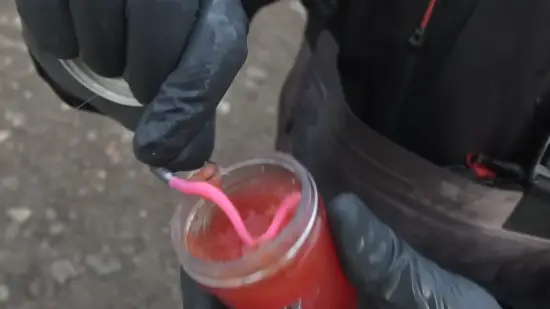
Using a pink worm or jig can be an effective option if you’re targeting steelhead. When choosing between the two, it ultimately depends on the conditions of the river.
In high and colored rivers, pink worms are a great choice due to their visibility and profile. The bright pink color stands out in the murky water, making it easier for steelhead to spot. Also, the wiggling action of the worm can trigger a predatory response from the fish.
Conversely, jigs can also be effective, especially in clear water conditions. The jig’s action mimics the baitfish’s movement, which can entice steelhead to strike.
Master the Art of Fly Fishing for Steelhead: Know the Primary Differences Between Male & Female
Fly fishing for steelhead can be a thrilling and rewarding experience. Knowing how to target male and female steelheads can make a big difference in your success on the water.
By understanding the distinct characteristics, behaviors, and bait preferences of male and female steelhead, you can adjust your fly fishing techniques and increase your chances of catching fish.
Whether you prefer fishing for male steelhead early in the season or targeting females during the spawning season, incorporating this knowledge into your fly fishing strategy will help you become a more skilled and successful angler.

